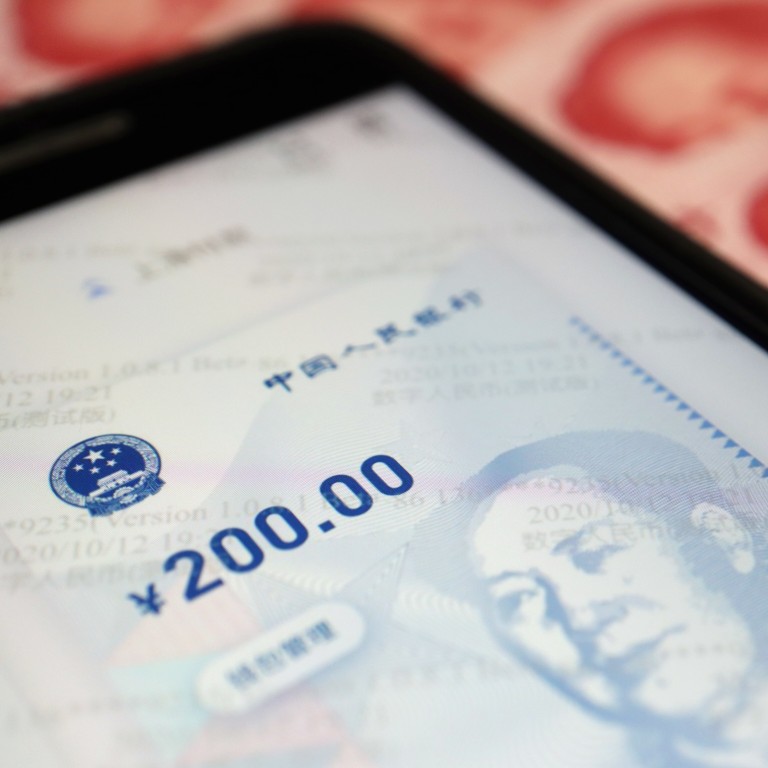
Chinese lenders Bocom, CCB explore use of e-yuan digital currency for buying funds, insurance products
- Officials at Bank of Communications, China Construction Bank say they are working with fund managers and insurers to explore expanding the e-yuan’s use beyond low-value daily retail payments
- The Chinese central bank’s digital currency had reached US$5.3 billion of transactions as of June as it undergoes trials
Leading state-owned Chinese banks are stepping up their pilot programme for a sovereign digital currency, revealing that they have started exploring ways to enable holders of the so-called e-yuan to buy investment funds and insurance products online.
“We have since 2017 been participating in the research and development of the central bank digital currency, which we view as significant for our payment system due to its ability to enhance payment efficiency,” said Zhang Min, executive vice-president, at the bank’s interim results briefing.
The bank said it has opened 7.23 million digital wallets for individual users, and another 1.19 million for companies. As of June, China Construction Bank had reported a cumulative 28.5 million transactions totalling 18.9 billion yuan (US$2.9 billion) using the digital yuan.
Bank of Communications (Bocom) is exploring the idea of expanding the use of the China’s virtual currency, commonly known as the e-yuan, to fund management and insurance companies, according to executive vice-president Qian Bin.
“China’s central bank digital currency is a form of legal tender, and from the perspective of a commercial bank, it is our obligation to facilitate the development and liquidity of the currency,” said Qian at an interim results briefing last Friday.
“We have made a lot of preparations to ensure the high efficiency and steady operations of the e-yuan system.”
Qian did not name the fund managers or insurance firms that the bank is working with. As of June, Bank of Communications had recorded 6.3 million e-yuan transactions totalling 2.5 billion yuan.
The central bank’s digital yuan is accelerating the world’s second-biggest economy’s journey towards becoming a cashless society by increasing the number of consumers paying for goods using e-wallets, rather than banknotes and coins. When the PBOC first mooted the project seven years ago its primary objective was to counter the dominance of Alipay and WeChat Pay, which account for over 90 per cent of mobile payments in China.
Bank of China reported a rise in net profit attributable to shareholders of 11.8 per cent from a year ago to 112.8 billion yuan. Its net interest margin, a key gauge of a bank’s profitability, dropped 11 basis points to 1.8 per cent.
Agricultural Bank of China’s net profit rose 12.4 per cent to 122.3 billion yuan, while its net interest margin slid 8 basis points to 2.1 per cent.

